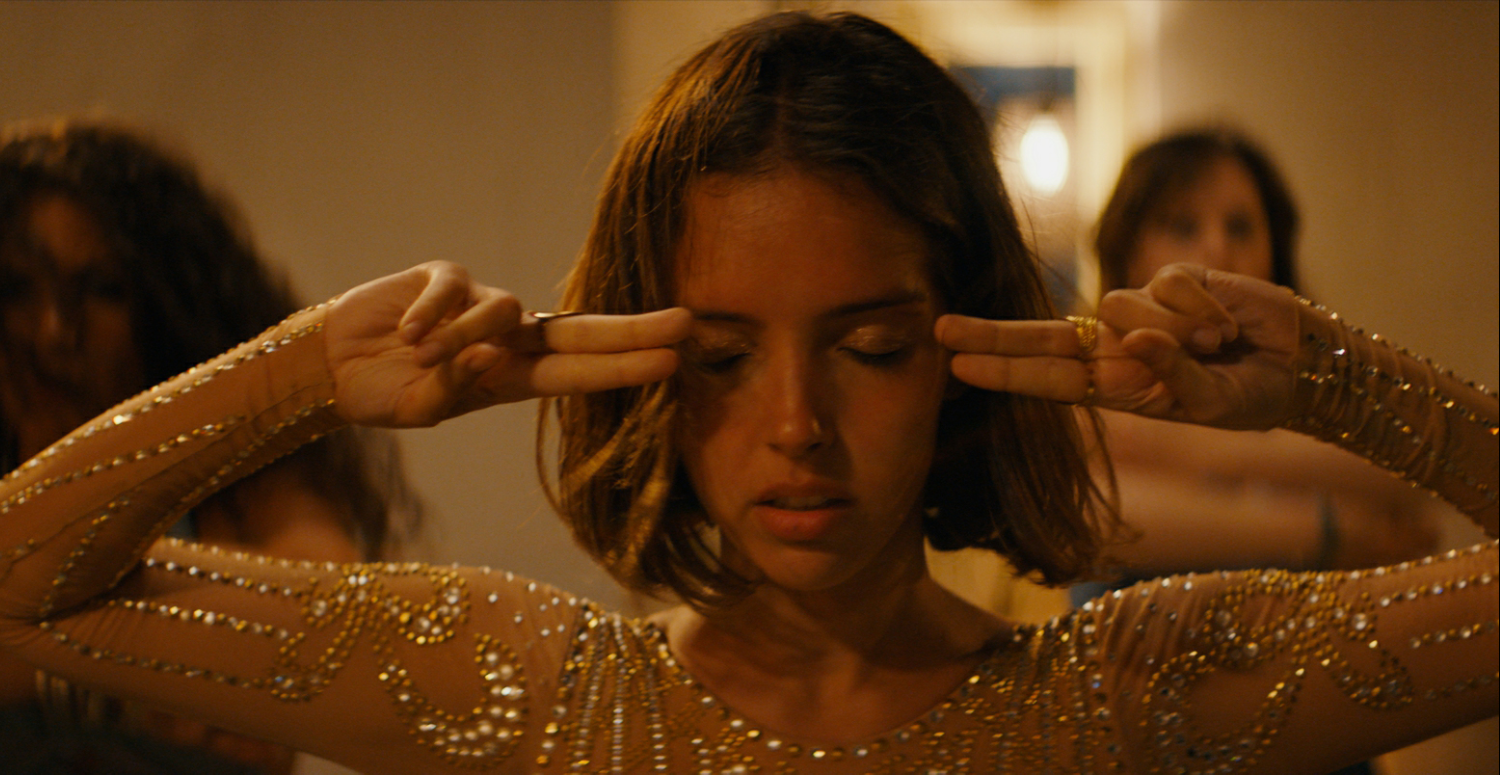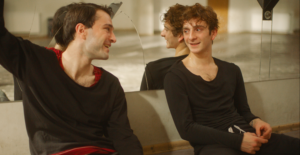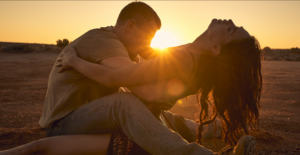Houria
2022

FR EN
Pour son second long-métrage de fiction, Mounia Meddour continue d’explorer l’émancipation des femmes en Algérie et les difficultés de la jeunesse actuelle. Lyna Khoudri, à nouveau tête d’affiche après avoir décroché le César du meilleur espoir dans l’excellent « Papicha », impressionne une nouvelle fois par l’énergie et l’émotion qu’elle transmet presque sans parler et démontre une palette de jeu toujours plus large et prolifique ces dernières années de « Gagarine » à « Novembre » en passant par « Nos Frangins » et cette semaine en salles « Les Trois Mousquetaires ».
Jeune et talentueuse danseuse qui travaille comme femme de ménage le jour et parie le soir sur des combats de béliers, Houria est violemment agressée un soir, ses rêves de carrière s’envolent alors et elle va devoir accepter son nouveau corps. Pour retrouver un sens à sa vie, elle va choisir de justement inscrire la danse dans la reconstruction des corps blessés …
Ce film algérien partage un récit thématiquement proche du récent « En Corps » avec une jeune danseuse au corps brisé qui doit se reconstruire. Mais si le parcours de résilience se suffisait à lui-même dans le film de Cédric Klapisch, dans « Houria » il s’inscrit dans un contexte politique et social marqué des stigmates de la guerre civile et d’une économie en berne. C’est ainsi une œuvre plus sombre entre le pardon national mal digéré de la décennie noire et l’émigration des zodiacs d’une jeunesse en quête d’exil.
Moins énergique et plus dramatique que « En Corps », le film de Mounia Meddour choisit également une esthétique différente en filmant très proche les corps, les visages, et les mouvements. Sans plans stables ou larges sur la chorégraphie de danse, celle-ci n’est alors plus la matière première du film, c’est bien le scénario qui occupe cette place avec une chorégraphie où se mêlent l’intime et le social. Pour le spectacle final, le scénario a ainsi d’abord été traduit en langue des signes pour que la chorégraphe Hajiba Fahmy réinterprète ensuite chaque signe en mouvement de danse.
S’il s’agit bien d’un film de danse, c’est aussi une œuvre émouvante qui traite de choc post-traumatique, de mutisme et de rééducation à travers l’histoire d’une femme qui se tut après son agression et dont la danse devint alors sa seule forme d’expression. Mais au-delà de ce portrait, « Houria » fait aussi celui d’une génération qui essaye d’avancer. Et s’il se concentre en effet sur son personnage-titre, il en fait une allégorie de son pays dans un film trilingue (français, arabe, LSF) qui intègre la blessure permanente d’une nation à travers ses personnages à l’image d’une Algérie blessée mais toujours debout et qui doit retrouver sa voix !
Raphaël Sallenave
For her second feature, Mounia Meddour continues to explore the emancipation of women in Algeria and the challenges of today’s youth. Lyna Khoudri, again headlining after winning the Cesar for best newcomer in the brilliant “Papicha”, impresses once again by the energy and emotion she conveys almost without speaking and demonstrates a range of acting that has grown increasingly broad and prolific in recent years from “Gagarine” to “November” as well as “Nos Frangins” (Our Brothers) and this week in theaters “The Three Musketeers”.
Young and talented dancer who works as a cleaning lady during the day and bets on ram fights at night, Houria is violently assaulted one night, thus shattering her dreams of a career and forcing her to accept her new body. To find a meaning to her life, she will choose to include dance in the rebuilding of injured bodies …
This Algerian film shares a thematically close story with the recent French film “Rise” (En Corps) with a young dancer with a broken body who must rebuild herself. But if the journey of resilience stood on its own in Cedric Klapisch’s film, in “Houria” it is set in a political and social context marked by the stigma of civil war and an economic stagnation. It is thus a darker picture between the poorly assimilated national forgiveness of the Black Decade and the zodiacs’ emigration of a youth in search of exile.
Less energetic and more dramatic than “Rise”, Mounia Meddour’s movie also chooses a different aesthetic by filming bodies, faces, and movements very tightly. Without stable or wide shots on the dance choreography, it is no longer the primary focus of the film, but instead the script takes that spot with a choreography where the intimate and the social mingle. For the final performance, the script was first translated into sign language so that the choreographer Hajiba Fahmy could then reinterpret each sign into a dance movement.
If it is indeed a dance film, it is also a moving work that deals with post-traumatic distress, mutism and rehabilitation through the story of a woman who fell silent after her attack and whose dance then became the only form of expression. But beyond this portrayal, “Houria” is also about a generation trying to move forward. And if it focuses on its title character, it turns her into an allegory of her country in a trilingual film (French, Arabic, sign) that embodies the permanent wounds of a nation through its characters representing an Algeria that is injured but still standing and must find its voice!
Raphaël Sallenave

